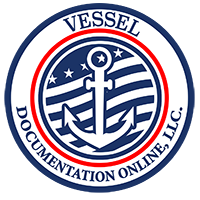There are basically two methods to register Recreational Vessels in the USA:
- Vessel Registration, which is a Certificate of Number issued by a specific state
- Vessel Documentation, issued by the U.S. Coast Guard
Recreational Vessels Registration
All those vessels equipped with propulsion machinery must be registered in their state of principal use with a Certificate of Number that must be displayed on it. This number must be painted or permanently attached to each side and forward half of the vessel, in a left to right reading disposition and contrasting color with its background. No other letters or numbers must be nearby, except for the validation sticker(s) that must be fixed within six inches of the registration number.
The operator/owner of the vessel must have the Certificate of Number whenever he or she uses it and must notify the agency that issued the Certificate of Number of its loss, destruction, or changed address within 15 days. The same applies if the vessel is transferred, destroyed, abandoned, lost, stolen, or recovered. Some states require registering all vessels, even those manually propelled or documented by Coast Guard. If a vessel is moved to another state, the certificate is valid for 60 days.
Vessel Documentation
Recreational vessels are eligible to be documented if they’re owned completely by a citizen or citizens of the U.S. and measure five net tons the minimum. The U.S. Coast Guard Certificate of Documentation is a national form of registration that serves as evidence of the vessel’s nationality for international purposes, provides free commerce between the states and admission to some restricted trades.
A documented vessel may be required to pay a registration fee and display a validation sticker issued by the state of principal use. The vessel’s hull must display its name and hailing port, whether it is for recreation or business use. To be in compliance with federal law, a Certificate of Documentation must be the original document, current, signed by the director of the National Vessel Documentation Center, and must be onboard the vessel.




